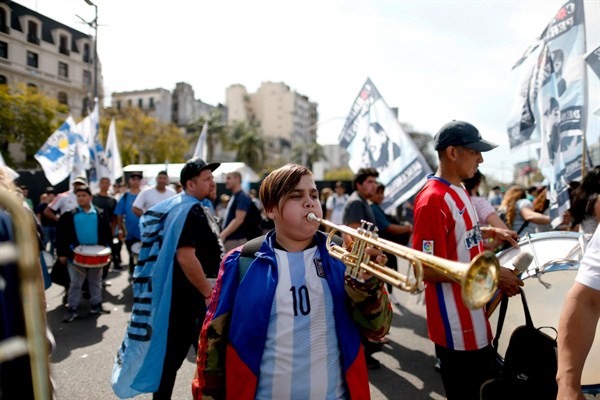BUENOS AIRES—Once again, Argentina has become synonymous with crisis. The Argentine peso has already lost half of its value against the dollar this year, and the economy is projected to contract by at least 2 percent while inflation reaches 40 percent. Beleaguered President Mauricio Macri is asking the International Monetary Fund for additional assistance, only three months after finalizing a loan agreement. Not surprisingly, Macri’s domestic popularity has suffered, weakening his re-election prospects next year.
But while the situation is indeed serious, comparing it with Argentina’s total economic, political and social collapse in 2001—as some Argentine and foreign commentators have—is as excessive as the unrealistic optimism that surrounded Macri’s inauguration in December 2015. Less than three years ago, the new president had promised a quick economic turnaround after the end of supposedly populist policies under former President Cristina Fernandez de Kirchner. What Argentina is now facing are the consequences of the structural vulnerabilities that Macri inherited when he took office, which his government had underestimated, perhaps for too long.
Until now, Macri’s mantra has been gradualismo: piecemeal reforms to reduce economic imbalances, cut a fiscal deficit that surpassed 5 percent of GDP in 2015, and open the economy to foreign trade and investment. For a while, this strategy seemed to work, both economically, as Argentina bounced back from a 2016 recession with 2.9 percent growth in 2017, and politically, as Macri’s Cambiemos coalition won the October 2017 midterm elections. But that progress rested on large entries of foreign capital to provide much-needed hard currency, and access to foreign debt to cover the deficit. Both began to falter in April, when a rise in international interest rates led by the U.S. Federal Reserve triggered a run against most currencies in emerging markets.

